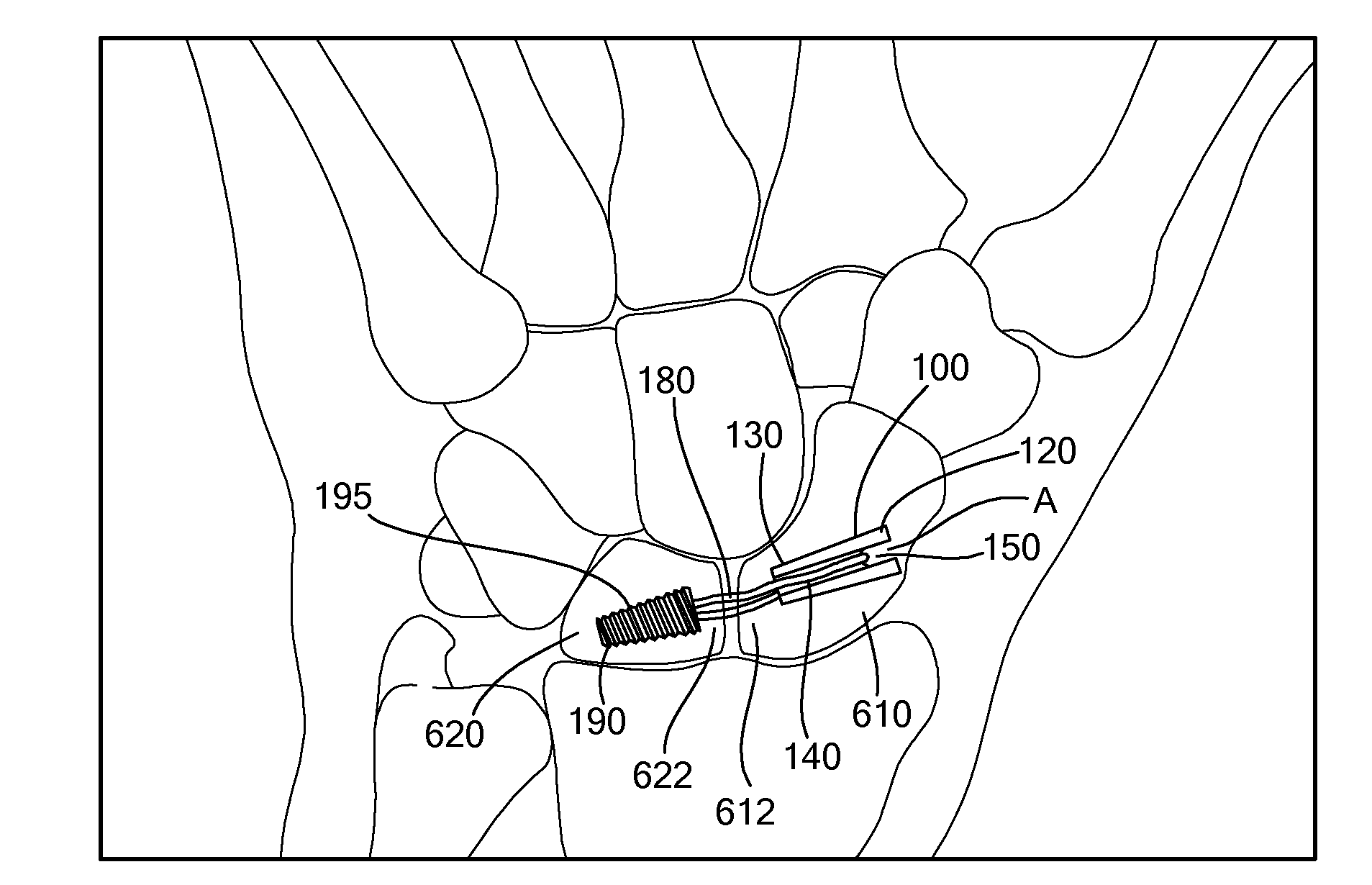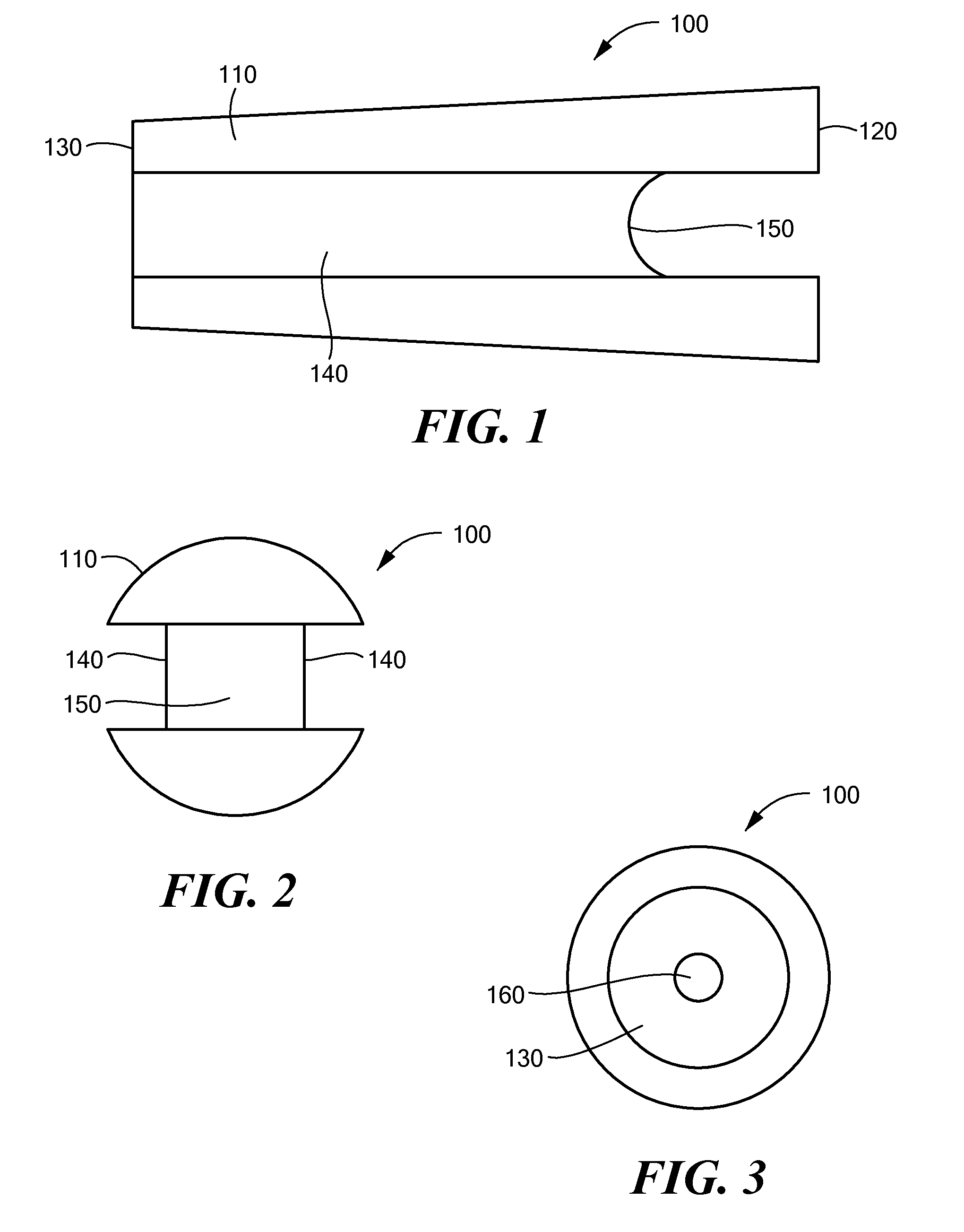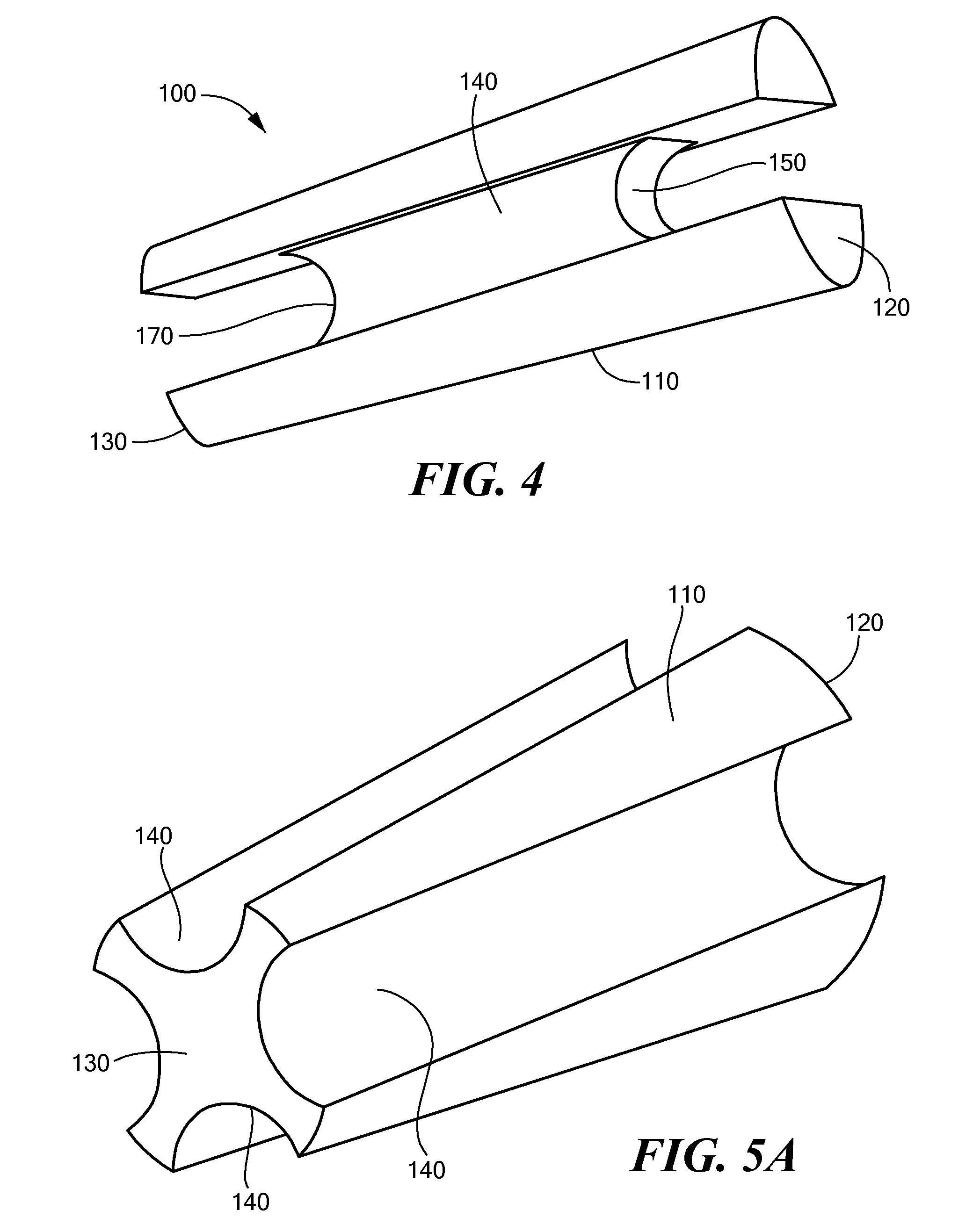Method and Device for Stabilizing Joints With Limited Axial Movement
a joint and relative axial motion technology, applied in the field of joint surgery, can solve the problems of reducing the range of motion of the wrist, affecting the function of the wrist, and affecting the function of the wrist, and achieve the effect of extending the focus and extending the application of suture anchors
- Summary
- Abstract
- Description
- Claims
- Application Information
AI Technical Summary
Benefits of technology
Problems solved by technology
Method used
Image
Examples
Embodiment Construction
[0053]Referring now to FIG. 1, a press-fit fastener 100 for coupling two or more bones in tension greatly simplifies and improves upon the currently used methods for controlling relative motion between bones or inter-fragmentary stabilization. The device (and method for using the same), when used in conjunction with a suture anchor 190 (FIG. 6), creates a system for adjustably securing a suture anchor 190 in tension. The system gives a physician the ability to manipulate movement between at least two bone members in a joint with low relative axial motion. The system also allows a physician to secure inter-fragmentary stabilization of a bone fracture. The system is used in conjunction with a suture anchor 190 to offer adjustable tension, thereby controlling the position (e.g., alignment), amount of rotation, and resistance to shear. The amount of desired rotation and shear depend on the application.
[0054]This system broadens the field of applications in which suture anchors can be us...
PUM
 Login to View More
Login to View More Abstract
Description
Claims
Application Information
 Login to View More
Login to View More - R&D
- Intellectual Property
- Life Sciences
- Materials
- Tech Scout
- Unparalleled Data Quality
- Higher Quality Content
- 60% Fewer Hallucinations
Browse by: Latest US Patents, China's latest patents, Technical Efficacy Thesaurus, Application Domain, Technology Topic, Popular Technical Reports.
© 2025 PatSnap. All rights reserved.Legal|Privacy policy|Modern Slavery Act Transparency Statement|Sitemap|About US| Contact US: help@patsnap.com



